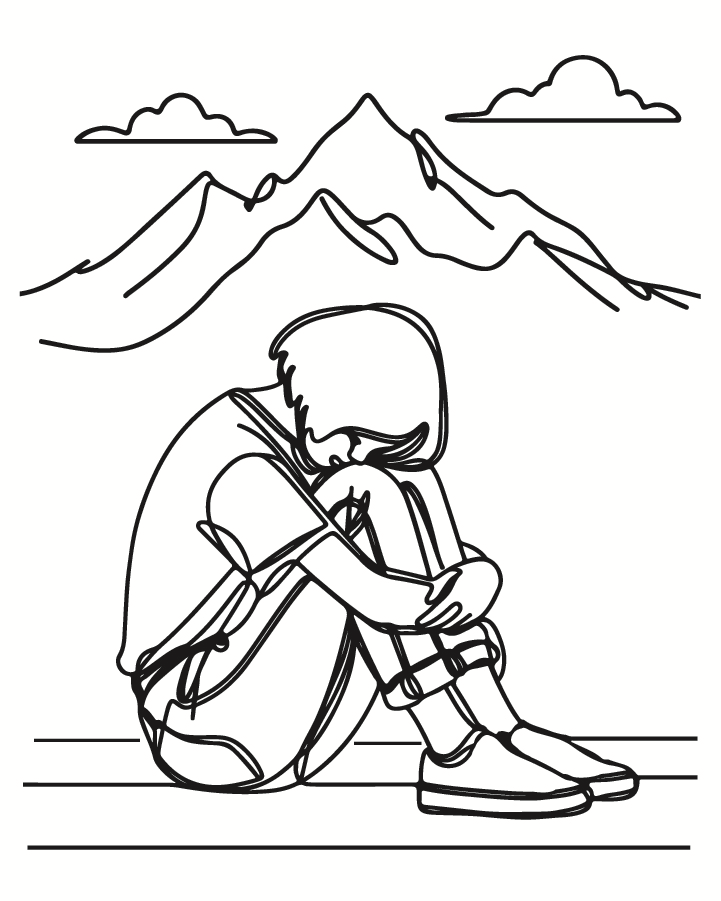Release Date: January 13, 2026
Healing Without Forgiving
a hero’s journey for dissociative survivors
by Lyn Barrett
Illustrated by Gwen Vogel
Take a peak from the Introduction …
As a survivor of chronic childhood trauma who was diagnosed with dissociative identity disorder (DID) in 1992, I bring good news.
Your wounds have made life difficult and disorienting today, but healing will make you wise and whole tomorrow. You may feel confused and fearful now, but clarity and security are just over the horizon. You are not relegated to a half-life limited by pain and doom, but to a whole life marked by joy, sorrow, happiness, sadness, achievement, failure, and all other human emotions and experiences. Because you were resourceful enough to survive then, you are resourceful enough to heal now. You are not the speck of dust on the floor that some of your parts may believe. You are — all of you — the bright, creative, worthy person who has embarked on a journey to discover yourself.
The good news is you’re alive.
The good news is you’re on a journey.
The good news is you have the capacity to thrive.
The good news is you can imagine a future.
The good news is you can become whole.
You are the hero of your story and, as such, you have the power to transform yourself both inwardly and outwardly to become the person you’re meant to be. Don’t get me wrong. Healing isn’t easy; in fact, it’s difficult beyond belief. But the very fact that you’re here with this workbook means you have the drive to heal from horrible, unimaginable abuse.
Healing Without Forgiving: a hero’s journey for dissociative survivors is meant to be a guide — one of many — for you on this journey. Other guides include your compassionate, trauma-informed therapist, your friends and family members who have proven themselves trustworthy, your own culled-in-the-fire intuition, and the work of healing that’s described in this workbook.
Like it or not, you have picked up the mantel, and you’re crossing the threshold as we speak. Mentors and companions will cross your path. Trials and obstacles will impede your progress. All the while, you’ll go inward to find the grit to continue in the face of impossible pain.
One obstacle you may face is the false assumption that forgiving is a moral high ground in the healing landscape, and that forgiving your perpetrator is a requirement for healing. From an alternative perspective, Healing Without Forgiving will look at healing as the greater process, with forgiving as one option in the healing universe. Forgiveness is a tiny slice of restoring your emotional, mental, and physical health; healing is the whole pie. Forgiveness may be one objective out of a hundred; healing is the overarching goal that opens up new life, new insights, and new possibilities. Many survivors find wholeness through the healing journey, but few find forgiveness as the path to healing. Instead, healing is the path to forgiving if that is a desired outcome.
A hero’s journey has a reward at the end, like the treasure at the end of the rainbow. All your hard work will not go for naught. On the contrary, you will fulfill your intention to heal and live into your vision for wholeness. For you, and all of us who have experienced chronic childhood trauma, the reward you will receive is a happy, healthy life. Ultimately, THAT is the good news you’re waiting to hear!
What Is Dissociation?
Healing Without Forgiving is meant for people who’ve been chronically abused as children and want to heal from these experiences to live the life they were meant to live.
Whether you’re diagnosed with a dissociative disorder or not, if you’ve been abused as a child, you probably use dissociation as one of your coping strategies. In its simplest sense, dissociation is the temporary separation of body and mind. The mind goes one place while the body is in another place. Typical signs of dissociation include spacing out, disappearing from what you consider your current life, or feeling a sense of unreality[i]. Dissociation is also manifest in cordoning off thoughts, feelings, and memories into different compartments in the mind resulting in multiple “parts” or alters.
In this workbook, I use the words parts and insiders when referring to the parts of our brains that were created through dissociation. The names we give to our parts may be personal and intimate; please feel free to translate into whatever words or phrases that are meaningful for you.
My focus on parts comes from my own diagnosis and the diagnoses of many of my peers. You may have experienced childhood abuse and you may feel spacey at times, but the concept of parts may not resonate with you. I encourage you to stick with us anyway if this topic otherwise feels right. Please feel free to translate parts language into whatever metaphors work for you. Explore the world of parts through other sources such as Inner Child Work and Internal Family Systems.
With or without parts, if you experienced childhood abuse or other traumatic wounds, if you dissociate as a coping strategy, and if you’re on a healing journey, then this workbook is for you.
What to Expect
Using the metaphor of the hero’s journey, we’ll explore what’s up ahead so you can prepare yourself for your voyage.
In chapter 1, The Beginning, you’ll set a healing intention and learn how forgiving fits within the larger context of healing.
In chapter 2, The Threshold, you’ll learn about the importance of a therapist and the three stages of healing first described by Judith Herman.
In chapter 3, The Initiation, you discover how to forgive yourself and take some steps to get there.
In chapter 4, Companions, you’ll explore relationship triggers and how healing them enables you to find trustworthy people to journey with you.
In chapter 5, The Test, you’ll discover that forgiving perpetrators, for most people, is really a distraction from the hard work of healing.
In chapter 6, The Quest, you’ll navigate The Healing Wheel that uncovers the work that will heal your wounds.
In chapter 7, Many Rewards, you’ll discover the surprise benefits you reap when you heal.
In chapter 8, Coming Home, you’ll claim your ultimate reward, a happy, healthy life, even as you continue your journey.
Throughout the book, you’ll find questions that will invite you to think about your journey, and spaces for you to journal the questions. Some people express themselves better in art mediums, music, or other forms of expression. Please feel free to explore the questions in your own chosen medium.
Pace Yourself
All journeys take time, and the hero’s journey is no exception. In fact, given the challenges the hero faces, the journey becomes a lifelong quest. Take your time. Give yourself space to heal if triggers arise. This workbook encompasses decades of work, so there’s no rush. You are preparing for a marathon, not a sprint, so pace yourself.
The Quest for Wholeness
A voice deep inside calls you to a healing journey, beginning today. You may question whether you’re up to the task but, let me assure you, you are. There are mountains to climb, rivers to forge, companions to meet, and dragons to slay — all very specific to you. You are the only one who can tame this landscape. You can do it, and you will do it, one step at a time. Bon voyage!
CITATIONS & NOTES
[i] See Marich, J. (2023). Dissociation Made Simple. North Atlantic Books, for an in-depth discussion of how dissociation is experienced by different people.
DID Unpacked: A Parable
A quick read to show what lies ahead …
DID Unpacked is a short ebook that will help you understand what to expect on your journey to recovery. Written as a parable, I hope all your parts will easily understand it. Welcome to the journey!
Please see the bios below about my wonderful artists who have made my books and website come alive!
Artists and Illustrators
Gail Coleman
Gail Coleman’s artwork* adorns this website. She says her work is about “the journey,” the adventure, and transformations that occur as we go through life.” Currently living in Mechanicsburg, PA, Gail is a good friend who has walked some of my journey with me. Appropriately, her artwork celebrates the human spirit. To see more of her work, go to www.gailwaldencoleman.com.
* Website artwork includes parts of Time to Go Home, Perfectly Imperfect, and Consciousness Crashing Through. Memoir cover is from Time to Go Home.
Ric Feeney
Ric Feeney’s beautiful watercolors bring the ebook DID Unpacked to life. He is a colleague, pastor, DJ, and watercolor artist who lives in the Adirondacks. Ric loves God, loves people and tries to follow Jesus. For more info on his artwork check out www.RicFeeney.com.
Gwen Vogel
Gwen Vogel is a graphic designer living in Essex, NY. In addition to designing this website, Gwen illustrated my workbook, Healing Without Forgiving: a hero’s journey for dissociative survivors. She lives in the Adirondacks, one of my favorite places in the world. To see her portfolio of work you can visit her website: gwenjamison.wixsite.com/design





